How 2025 Policy Changes Could Affect
Your Financial Future
With 2025 underway there are a lot of changes underway with the potential for more as the new administration begins implementing its economic agenda.
Secure Act 2.0
The Secure Act 2.0 (Setting Every Community Up for Retirement Enhancement) was a law passed under the Biden Administration to improve retirement savings opportunities. Different portions of the plan have already been phased in but beginning in 2025 there are a few changes that workers of all ages should be aware of.
- Increased Catch-Up Contributions: Employees aged 60 to 63 can make higher catch-up contributions to workplace retirement plans. In 2025, this amount increases to the greater of $10,000 or 50% more than the regular catch-up limit for those under age 50, adjusted for inflation.
- Automatic Enrollment in Retirement Plans: Employers offering new 401(k) and 403(b) plans are required to automatically enroll eligible employees, starting at a contribution rate of at least 3%, with annual increases up to 10-15%. Employees can opt out if desired. Existing plans are exempt.
Outside of the new features that have been phased in from prior legislation is the proposals from the incoming Trump administration. Donald Trump’s economic policy during his presidency will be focused on two major aspects: imposing tariffs on foreign goods and implementing significant tax cuts. While the full details are still not clear, there are some pieces of the agenda that have either been made via executive order or have been mentioned by Trump since he has taken office.
Tariff Policies
Tariffs on Canada, Mexico, and China
On February 1, 2025, President Trump signed executive orders imposing additional tariffs on imports from Canada, Mexico, and China. Specifically, a 25% tariff was placed on imports from Canada and Mexico, with a lower 10% tariff on Canadian energy resources. Imports from China were subjected to a 10% additional tariff. These measures are part of a broader strategy to hold these countries accountable for issues such as illegal immigration and the flow of illicit drugs into the U.S.
Steel and Aluminum Tariffs
The administration has announced plans to impose a 25% tariff on steel and aluminum imports from all countries, including major partners like Mexico and Canada. This move is intended to protect domestic industries but may further escalate trade tensions.
Reciprocal Tariffs
President Trump has announced plans to implement a reciprocal-tariff regime, which would increase taxes on imports from countries that impose high tariffs on U.S. goods. This approach is intended to create fairer trade conditions but carries the risk of escalating global trade tensions and potentially triggering a tariff war. For instance, the European Union imposes a 10% tariff on U.S. cars, while the U.S. imposes only a 2.5% tariff on European vehicles. The reciprocal tariffs strategy aims to address such disparities.
Tax Policies
Tax Increases on Sports Team Owners
The Trump administration plans to end special tax benefits for billionaire sports team owners, who collectively have a net worth close to $1 trillion. This proposal aims to eliminate lucrative tax write-offs, particularly the ability to depreciate investments over 15 years, which are beneficial for sports franchise owners. While the details are still unclear, this move could significantly impact new buyers of sports franchises.
Elimination of Taxes on Specific Income Items
Proposed tax policies include eliminating taxes on specific income items such as tips, overtime, and Social Security benefits. Additionally, there is a suggestion to create an itemized deduction for auto loan interest and impose taxes on large private university endowments.
Corporate Tax Rate Reduction
President Trump has proposed cutting the corporate income tax rate to 15% and extending full investment deductions as part of the 2025 tax package. This move could further erode the momentum for the OECD’s anti-tax-competition regime and potentially lead to the rollback of domestically implemented minimum tax components in countries worldwide.
Revenue Impact of Tax Proposals
On a conventional basis, it is estimated that Trump’s proposed tax changes would reduce federal tax revenue by $3 trillion from 2025 through 2034. The revenue loss falls to $2.5 trillion on a dynamic basis. However, these figures do not account for the newly established Department of Efficiency (DOGE) that is reshaping the federal government with the goal of finding waste, fraud and abuse help mitigate the loss of tax revenue via reductions in spending.
These policies reflect the administration’s ongoing efforts to reshape trade relationships and tax structures to prioritize domestic economic interests. However, they also carry potential risks, including escalating trade tensions, increased consumer prices, and significant impacts on federal revenue. As these policies are implemented and debated, their full effects on the U.S. economy and its global relationships will become clearer.
Trump’s tariff plans and extension of his tax cuts are the hallmark economic policy goals of his administration. It is too early to know the full implications, if his plans are implemented in their entirety, but what is clear is the market is currently waiting for clarity on the full details before we expect a major market move to the upside or downside.
Navigating the Changes Ahead
With 2025 bringing significant policy shifts, staying informed and prepared is important for individuals and businesses alike. The evolving landscape of tax policies, tariffs, and retirement savings regulations will impact financial planning strategies, investment decisions, and long-term wealth management.
At Insight Wealth Strategies, LLC, we specialize in helping our clients navigate economic and legislative changes with tailored financial planning, investment management, and retirement strategies. Whether you’re adjusting your retirement savings approach due to Secure Act 2.0, evaluating tax implications for your investments, or preparing for potential market shifts, our experienced advisors are here to guide you.
Now is the time to make sure your financial plan is aligned with the latest developments. Schedule a consultation with our team today to discuss how these changes may affect you and how we can help optimize your financial strategy. Visit https://insight2wealth.com/ or call us at 800-318-7848 to get started.
Written by,

Michael Agorastos, CFP®
Michael is a comprehensive, fee-only financial planner who began his financial services career with Insight Wealth Strategies in 2013. His primary areas of expertise cover retirement planning (e.g. cash flow analysis, developing retirement income strategies, stock option planning, corporate benefit analysis, etc.), investment planning, and high-level income tax reduction strategies for individuals and small business owners.
Insight Wealth Strategies, LLC is a Registered Investment Adviser. Advisory services are only offered to clients or prospective clients where Insight Wealth Strategies, LLC and its representatives are properly licensed or exempt from licensure. Past performance is no guarantee of future returns. Investing involves risk and possible loss of principal capital. No advice may be rendered by Insight Wealth Strategies, LLC unless a client service agreement is in place.
Insight Wealth Strategies, LLC (IWS) and its affiliates do not provide tax, legal or accounting advice. This material has been prepared for informational purposes only, and is not intended to provide, and should not be relied on for, tax, legal or accounting advice. You should consult your own tax, legal and accounting advisors before engaging in any transaction.
Certified Financial Planner Board of Standards Inc. owns the certification marks CFP®, CERTIFIED FINANCIAL PLANNER™, in the U.S., which it awards to individuals who successfully complete CFP Board’s initial and ongoing certification requirements.




